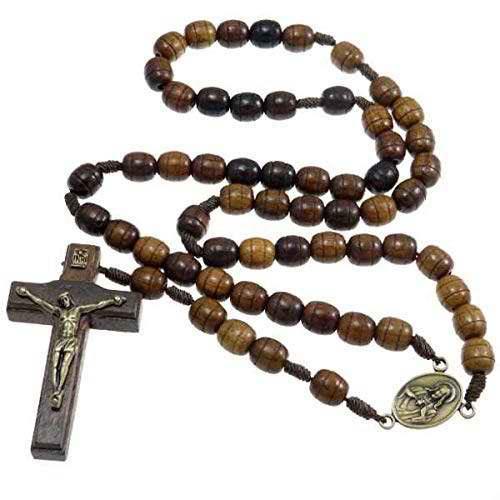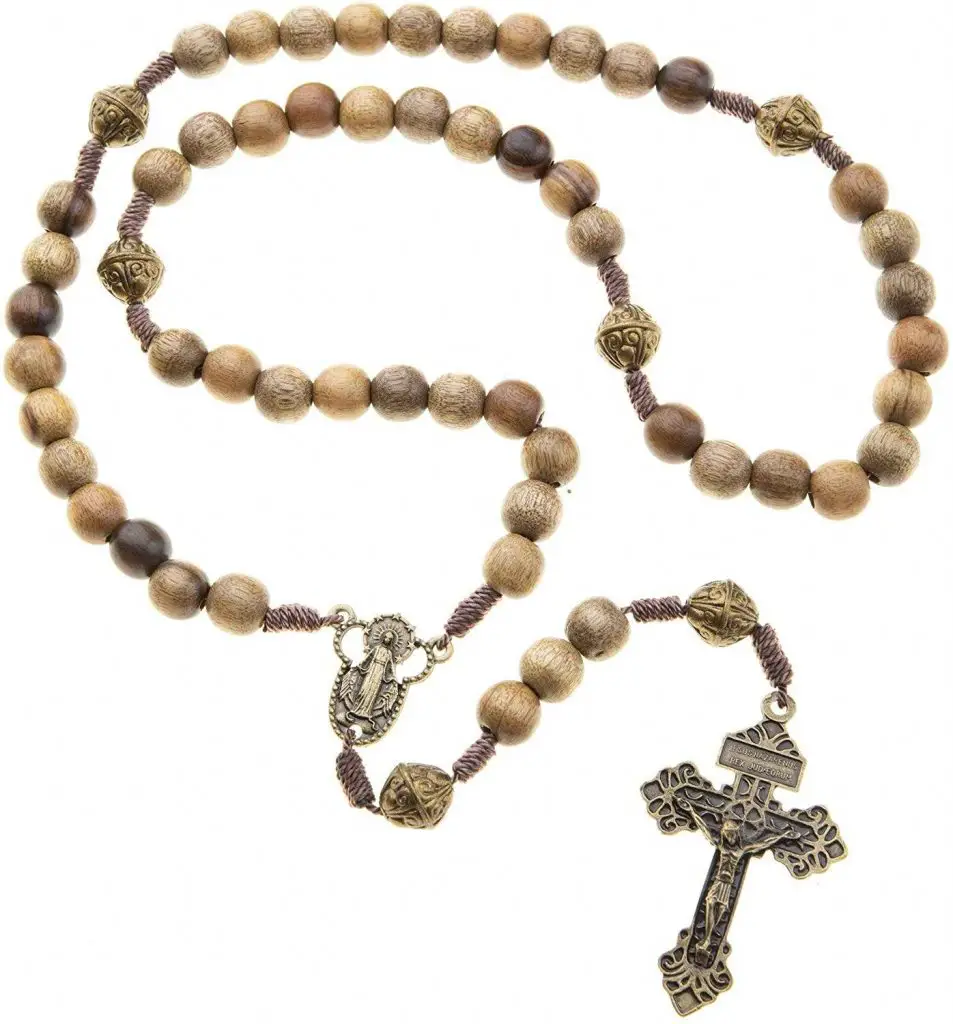Symbol of focus, guidance, goodness, and light.
The rosary has a deep history. Buddhist rosary beads or mala first appeared in the 8th century B.C. before being used as prayer beads in the Catholic church. These mala beads were used to help with meditation in the Buddhist religion. The Hindus also used mala beads when praying. The Hindu female deity Hakini Shakti was depicted with prayer beads. These beads symbolize focus and meditation while using them for prayers. They were used in a guided meditation to help count Chakras. Traditionally, there were 108 mala beads on a strand. The king of Malabar was found by Marco Polo using prayer beads in the thirteenth century.

The use of mala beads most likely influenced the creator of the rosary. Early Christian monks who wandered around Egypt and lived the life of hermits developed prayer beads. They used these beads to help keep track of their prayers. In 1214, St. Dominic was said to have had a vision where he saw the Virgin Mary and was given the Rosary. Until the 20th century, the Rosary represented the fifty Hail Mary prayers. The Rosary was officially used in the church starting in 1569. During the 16th through the 20th century, there were fifteen mysteries. Each mystery represented a decade. The mysteries are divided into joyful, sorrowful, and glorious. The mysteries themselves are meditations on different times in the life of Jesus. The joyful focus on the early life, the sorrowful on the life of Jesus up until he was crucified, and the glorious are focused beyond the crucifixion. In the 20th century, the Fatima prayer was added at the end of each mystery. Pope John Paul II added an optional mystery in 2002. It was called the luminous mystery, or mystery of light. This mystery included the Baptism of Jesus, the Wedding in Cana, the proclamation of the kingdom of God, the Transfiguration, and the Institution of the Eucharist. George Preca wrote The Mystery of Light in 1957, but it was not commonly used until after 2002.
The rosary is used to remedy the hardships of life, temptations, and severe trials. It is a weapon against evil. After confession, a priest may prescribe a rosary for a person to come back to Christ through meditation. People can pray all fifteen mysteries at once or pray one mystery daily. The Catholic church determines the mystery and varies day by day.
A rosary consists of one large bead followed by ten small beads for a total of fifty-nine beads. Each smaller bead represents a step in a mystery, while the larger bead is designated for the Lord’s prayer. There is also a cross on the rosary, symbolizing Christ. Because of the persecution of the Irish Catholics in the 16th and 17th centuries, smaller ten-bead rosary beads that could easily be hidden were produced. They would also use nails or a rooster instead of the cross to help keep the rosary from being noticed. Rosaries can be made from stone, gems, wood, plastic or any other material. Rosaries have also been found as rings in the 15th century. They were usually given to and worn by nuns. Rosary bracelets and cards have also been developed and used. Today, you can find rosaries hanging in cars to identify the owner as Catholic.

The rosary can be found in paintings and other artwork throughout time. Mostly Catholic, but some Buddhist and Egyptian paintings have prayer beads incorporated into the artwork. The ancient city of Nineveh had a sculpture of two female figures with wings holding prayer beads.
Symbols Menu:» Amulet
» Ajna
» Arsenic
» Merkaba
» Hung
» Yin Yang
» bindi
» IK Onkar
» Khanda
» Halo
» jiahu
» Tau
» Uraeus
» Menorah
» Quincunx
» Tilaka
» Taijitu
» Vajra
» Chai
» Chi Rho
» Bagua
» Dragon
» Hunab Ku
» Caduceus
» Infinity
» Ichthus
» Hedjet
» Lauburu
» Om
» Ankh
» Chalice
» Pentacle
» Maat
» Ogham
» Mandala
» Kartika
» Khamsa
» Heart
» Labrys
» Sun Face
» Raven
» Triskele
» Scarab
» Dove
» Hanukia
» Anubis
» Trishula
» Durga
» Mezuzah
» Bay Tree
» Geruda
» Kinnara
» Quito
» Condor
» Blue Jay
» Falcon
» Makara
» Rosary
» Uluru
» Apsaras
» Hanuman
» Serpent
» Minotaur
» Mercury
» Apex
» Vestra
» Yoni
» Astarte
» dakini
» Calabash
» Mandrake
» Rebis
» Typhon
» Vegvísir
